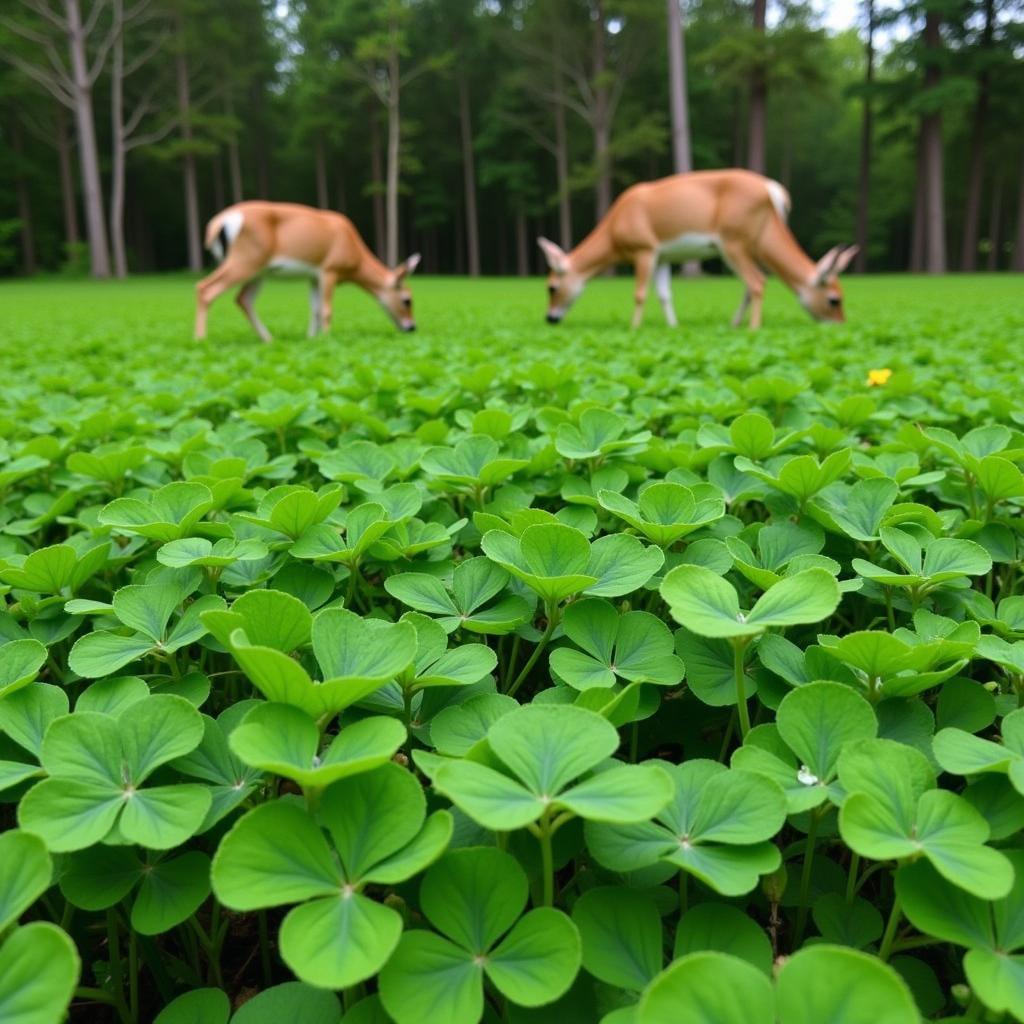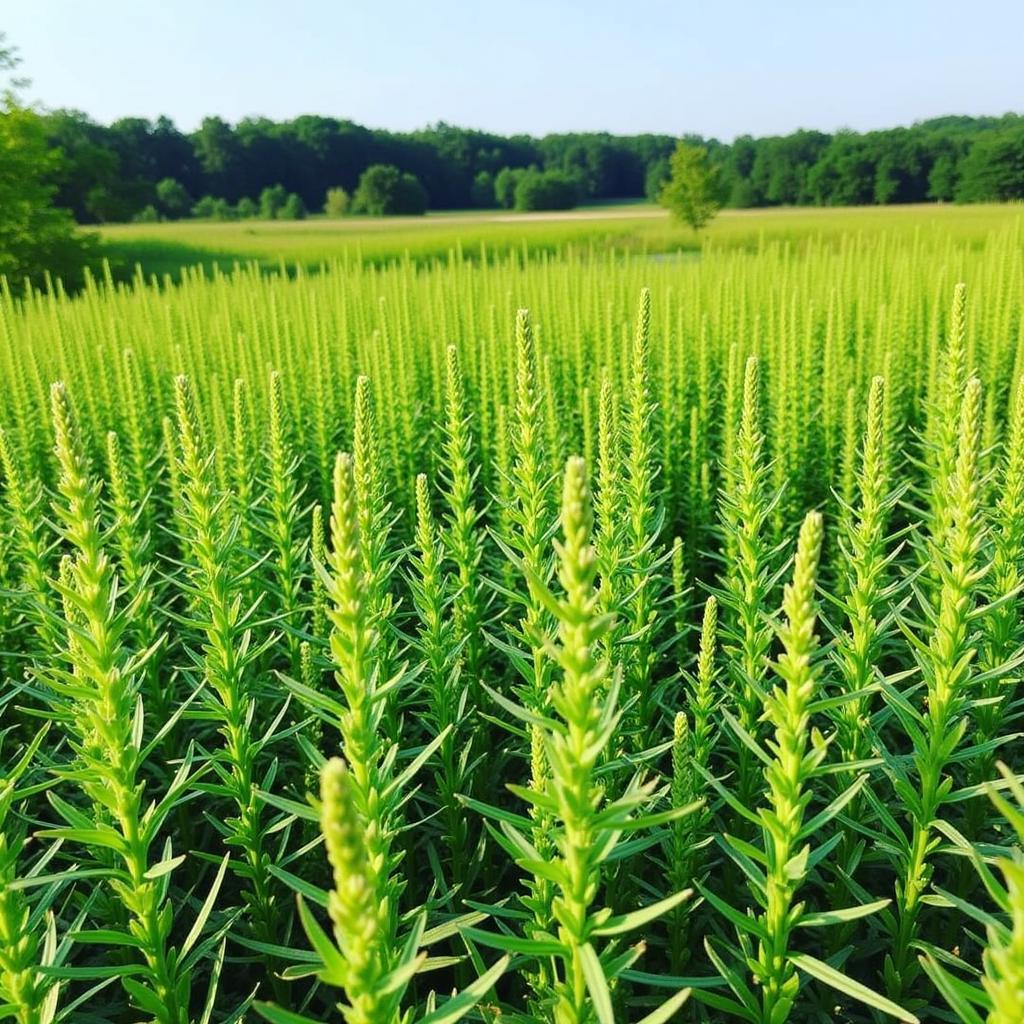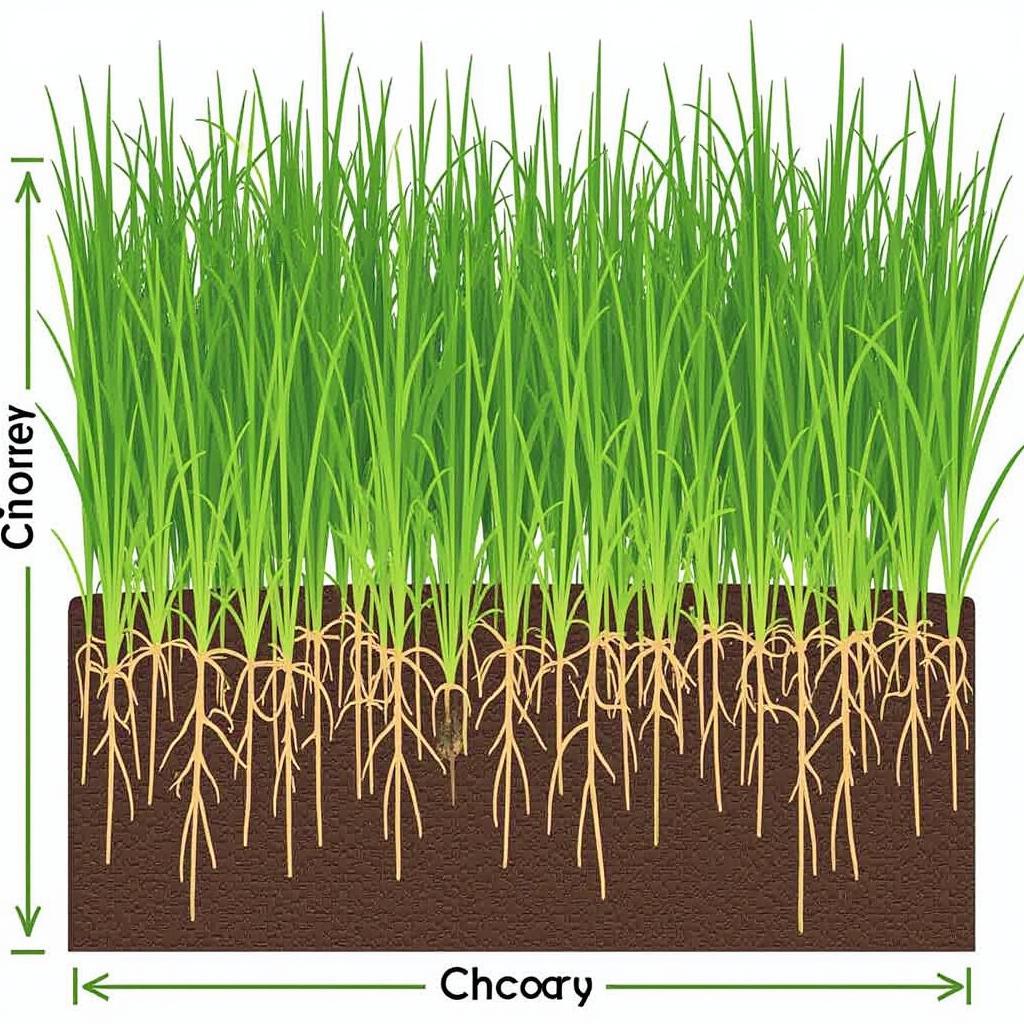Perennial Deer Food Plots offer a long-term solution for attracting and sustaining healthy deer populations. Unlike annual food plots that require yearly planting, perennials can last for several years, reducing your workload and providing consistent forage. This makes them an attractive option for hunters and land managers seeking a sustainable and effective approach to wildlife management. Let’s delve into the world of perennial deer food plots and discover how you can establish a thriving habitat on your property.
Establishing a successful perennial deer food plot requires careful planning and execution. First, soil testing is crucial to determine the pH and nutrient levels. This allows you to amend the soil appropriately, maximizing the growth potential of your chosen perennial. A well-prepared seedbed is also essential for successful germination and establishment. You should aim for a fine, firm seedbed free of weeds and debris. Shortly after establishing your food plot, consider a no-till food plots for deer option for future planting.
Choosing the Right Perennial Forage
Selecting the right perennial forage is paramount for the success of your deer food plot. Consider your local climate, soil conditions, and the specific nutritional needs of the deer in your area. Some popular choices include clover, alfalfa, and chicory. Clover is a highly palatable option that provides excellent protein content, while alfalfa is known for its high nutritional value and drought tolerance. Chicory is a deep-rooted perennial that can withstand heavy grazing pressure. Researching alfalfa for food plots can offer valuable insight.
 Clover in a perennial deer food plot
Clover in a perennial deer food plot
Maintaining Your Perennial Deer Food Plot
Once established, perennial food plots require ongoing maintenance to ensure their longevity and productivity. Regular mowing can help control weed growth and encourage vigorous plant growth. Fertilization is also important to replenish soil nutrients and maintain healthy forage. Soil testing every few years can help you adjust your fertilization regime as needed. Finding the best food plot for deer and turkey year-round may require experimentation and adaptation based on your specific location and wildlife needs.
Benefits of Perennial Deer Food Plots
Perennial deer food plots offer several advantages over annual food plots. Their longevity reduces the need for yearly planting, saving you time and resources. They also provide a consistent food source for deer throughout the year, which can improve deer health and antler growth. Additionally, perennial food plots can enhance the overall habitat quality by providing cover and nesting areas for other wildlife species. Thinking about a late-summer planting? Check out the best food plot to plant in august.
 Alfalfa in a thriving perennial deer food plot
Alfalfa in a thriving perennial deer food plot
Maximizing the Impact of Your Food Plot
Strategic placement of your perennial deer food plot can significantly enhance its effectiveness. Consider locating the plot near bedding areas or travel corridors to maximize deer usage. Creating multiple smaller plots rather than one large plot can also distribute deer activity and reduce browsing pressure in any one area. A well-placed ryegrass food plot can be a valuable supplement to a diverse food plot strategy.
 Chicory in a diverse perennial food plot
Chicory in a diverse perennial food plot
In conclusion, perennial deer food plots provide a sustainable and effective way to attract and manage deer populations. By carefully selecting the right forage, preparing the soil properly, and implementing ongoing maintenance, you can establish a thriving habitat that benefits deer and other wildlife for years to come. Don’t hesitate to experiment and adapt your approach to suit your specific needs and conditions. Remember, creating a successful perennial deer food plot requires a long-term commitment and ongoing effort, but the rewards are well worth the investment.
FAQ
- How long do perennial food plots last? Perennial food plots can last for several years with proper management.
- What are the best perennial plants for deer? Clover, alfalfa, and chicory are popular choices, but the best option depends on your local climate and soil conditions.
- When is the best time to plant perennial food plots? Spring or fall are generally the best times for planting perennial food plots.
- How do I maintain a perennial food plot? Regular mowing and fertilization are essential for maintaining a healthy perennial food plot.
- What are the benefits of perennial food plots? They reduce planting frequency, provide consistent forage, and enhance habitat quality.
- How can I maximize the impact of my food plot? Strategic placement and creating multiple smaller plots can improve effectiveness.
- What should I consider before planting a perennial food plot? Soil testing, site selection, and forage choice are crucial considerations.
Common Food Plot Scenarios and Solutions
- Scenario: Poor soil quality leads to slow growth and low yields. Solution: Conduct a soil test and amend the soil with appropriate nutrients and lime.
- Scenario: Weed competition overwhelms the food plot. Solution: Implement regular mowing and consider using herbicides if necessary.
- Scenario: Deer overgraze a specific area of the food plot. Solution: Create multiple smaller plots to distribute deer activity and reduce browsing pressure.
Further Reading and Resources
For more information on food plots, consider exploring articles on topics such as creating a year-round food plot strategy and implementing no-till farming techniques for food plots.
If you need assistance, please contact us at Phone: 02437655121, Email: minacones@gmail.com or visit us at 3PGH+8R9, ĐT70A, thôn Trung, Bắc Từ Liêm, Hà Nội, Việt Nam. We have a 24/7 customer support team.